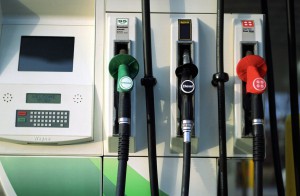Despite creeping up two cents per gallon as refinery maintenance reduced availability in some parts of the country, gasoline prices remain low by recent standards, which has helped feed a boom in sales of trucks and utility vehicles.
Even after the slight increase in average pump prices, drivers continue to benefit from substantial discounts as prices drop to the lowest price for this same date since 2006, according to AAA.
Consumers are saving 10 cents per gallon month-over-month and 72 cents per gallon year-over-year. The national average has moved lower for 24 of the past 30 days and is down 59 cents per gallon versus the 2015 peak price of $2.80 per gallon back in June.
Drivers in six states are paying an average below $2 per gallon, and consumers in South Carolina at $1.95 per gallon and Alabama at $1.96 continue to pay the lowest prices at the pump. Hawaii at $2.87 is the nation’s most expensive market for retail gasoline, and it is joined by California at $2.84 per gallon. For the sixth consecutive week, all statewide averages are below $3 per gallon and only four states are posting averages above $2.50 per gallon.
Meanwhile, fuel economy of new vehicles sold in the U.S. dropped for the third straight month and is now at its lowest point in any month this year, according to researchers at the University of Michigan Transportation Research Institute.
Based on window-sticker values, the average fuel economy of cars, light trucks, vans and SUVs purchased in October was 25.0 mpg, down 0.2 mpg from September, the U-M researchers said.
“This decline likely reflects the decreased price of gasoline in October, and the consequent increased sales of pickup trucks and SUVs,” said Michael Sivak, a research professor at the University of Michigan Transportation Research Institute.
(China auto sales post massive October rebound. For more, Click Here.)
Overall, fuel economy is down 0.8 mpg from the peak reached in August 2014, but up 4.9 mpg from October 2007— when U-M began keeping track of the number.
In addition to average fuel economy, the university issued a monthly update of their national Eco-Driving Index, which estimates the average monthly emissions generated by an individual U.S. driver. The EDI takes into account both the fuel used per distance driven and the amount of driving—the latter relying on data that are published with a two-month lag.
(Click Here for details about GM plugging in a potential game changer.)
Gasoline prices have been prevented from falling by the refinery maintenance season, which has reduced utilization. Refinery utilization is reportedly beginning to return to normal rates; however, select regional markets are still under pressure as a result of the sheer volume of planned maintenance combined with unplanned outages, according to AAA.
The price of crude oil remains under intense pressure. Both crude oil benchmarks, Brent and West Texas Intermediate, closed out this past week with three days of losses due to reports of a strengthening U.S. dollar, which further fueled expectations that the market’s current oversupply will continue in the near term.
(To see more about German, U.S. regulators cracking down on emissions testing, Click Here.)
Drilling activity has dropped to its lowest point since June 2010, and the latest reports from the Bureau of Land Management show that oil and gas extraction shed 2,700 jobs during the month of October. Despite this decline in drilling, total crude inventories in the U.S. continue to build and are within 10 million barrels of the record amount reached last spring, which contributes to the downward pressure on prices, AAA noted in its weekly report on gasoline prices.

